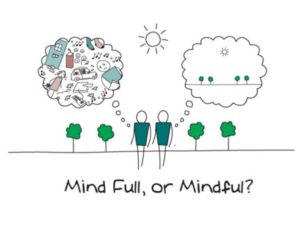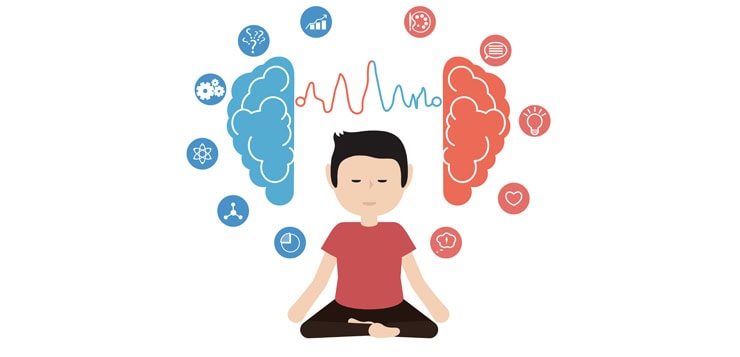 Mindfulness has proven to be effective in lowering relapse rates in substance use disorders as well as proving effective in lowering anxiety symptoms and stress levels across diagnosis. It’s not much of a surprise that we are hearing about mindfulness-based treatments and mindfulness-based practice all over the treatment world given its shown effectiveness.
Mindfulness has proven to be effective in lowering relapse rates in substance use disorders as well as proving effective in lowering anxiety symptoms and stress levels across diagnosis. It’s not much of a surprise that we are hearing about mindfulness-based treatments and mindfulness-based practice all over the treatment world given its shown effectiveness.
It is all well and good that we know mindfulness can improve our overall wellbeing, but what does mindfulness really mean in layman’s terms and how do we practice it? Is it something that can only take place in the office of a high paid therapist? Let’s take a minute and try to walk through this together. Jon Kabat-Zinn, One of the founding fathers of mindfulness in the Western World, defines mindfulness as “paying attention in particular way: on purpose, in the present moment, and non-judgmentally.”
Lets break that down for those of us who aren’t Zen Masters:
Paying attention in a particular way – This means that mindfulness is a specific way of observing what is happening.
On purpose – There must be some intention in the way that you are observing, a purposeful thing that you can focus your attention to.
In the present moment – We are intentionally observing the current or immediate experience. It is the Here, the Now.
Non-judgmentally –In addition to intentionally observing our current experience (both internal and external), mindfulness says to do this without judgment of the current experience as good, bad, uncomfortable, etc. Allowing you to recognize a sensation, an experience, or emotion in the moment free from the confines of immediate judgment.
Seems easy enough, lets try it out.
I will use my current experience to demonstrate the concept of mindfulness. As I focus my attention to my present moment, I notice that there is a computer in front of me and I hear a buzzing sound from lights above me. Internally, I notice there is tightness in my chest and I am slightly anxious since I have a lot of other work to do, in addition to this blog post. I also notice that I am struggling to focus on this blog post because I am uncertain if I am doing an effective job of explaining the concept of mindfulness, which is sort of ironic. The last and most important part of mindfulness is to notice this experience – the buzzing sound, the anxiety, uncertainty, and tightness in chest – without any judgment.
When I try to do this, I notice that I am still evaluating my current experience and not doing a good job of being completely non-judgmental. Well, according to the concept of mindfulness, I will not judge my judgment and I will bring my attention back to my present moment.
After a couple of minutes I recognize what I am experiencing and I am able to just observe without having to evaluate the experience. Allowing myself to be in the present and allowing myself to focus back on the present when my mind wanders. Even after just that short exercise I feel lighter and with less of the anxiety than before. As a result, it becomes a bit easier to focus my attention on this blog post.
Mindfulness can be practiced and utilized anywhere. It is the process that matters, so no attempt at mindfulness can result in failure. I invite you; yes you reading this blog post, to give it a try. All you have to do is bring your attention to your present experience without judgment; without indulging in the constant chatter of the inner critic.

